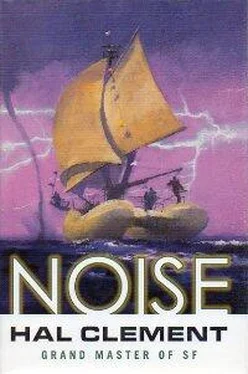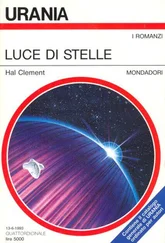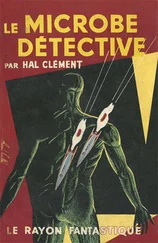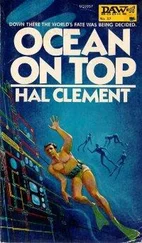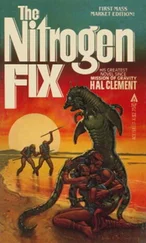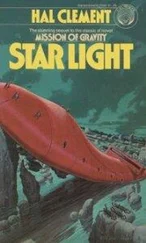Hours rolled by, however, with pods of iron still coming aboard, and Mike kept feeling better and better until shortly after the suns reached the meridian. Then the captain gestured ’Ao out of the sea as she arrived with a full bucket, and a few minutes later did the same for Keo.
“That had better do,” she said when all helmets had been flipped back. “’Ao, take down the ‘not yet’ pennant. You’ve spotted the nucleus?” Both heads nodded; that bit of body language was standard even on the colony world. “All right. Keo, get the gen kit. ’Ao says she knows mitosis; let her show you. If she messes it up, it won’t be very important with this one, so don’t interrupt her unless things get dangerous. Mike, you may go back with them and watch if you like, but you won’t be able to understand much. They’ll—or she will—be installing a chromosome unit which will make this machine grow a new nucleus and then divide. Just once.”
“They’re not built to reproduce indefinitely?”
“This is a small planet.” Hoani almost pointed out that it had a third more surface than his own, then saw the point the captain probably had in mind. Any planet is small when confronted with the exponential behavior of life. “We can’t afford to let anything reproduce uncontrolled. We could, no doubt, design a set of predators to hold down the metal-fish population, but it seems more comfortable to do our own planning than to depend on that sort of statistic, which never worked very well on Earth. Escaped Terrestrial microlife we worry about, but so far it seems to be balancing itself off. The varieties that can survive in the ocean here have both prey and predator types, and the cycles phase locally. With large pseudolife forms, phases would be worldwide, and the times when the predators reach a high count but haven’t quite run themselves out of food would be very unproductive.”
The visitor nodded. His own world had been painfully slow to learn that lesson, and was still far from being back to its calculated half billion equilibrium human population. His own child had been permitted as a result of an agreement with authorities that either both parents or the child would emigrate when the latter reached self-supporting status.
“You didn’t seem to hesitate when Keo asked you what to do this time,” he remarked, returning to the question of the iron-fish’s disposal.
“I did my hesitating earlier. I’d made up my mind when he asked.”
“So this thing you’re planting won’t reproduce itself; it will just cause the i’a’uri to divide once.”
“Right.”
“Even if ’Ao makes a mistake in the installation?”
“Yes. All she could probably do wrong would either prevent it from dividing at all, or kill it—effectively, the same result. It wouldn’t be a catastrophe. I’d’ve suggested that she try the job even if she hadn’t asked to. I’m glad she did; some youngsters are afraid to try anything they haven’t done before.”
“I’ve known some who went the other way—were too eager to show off and got badly burned mentally and sometimes literally by failure.”
“So have I. We’ll hope Keo’s judgment about helping turns out to be sound. Here they come. Do you want to go with them?”
“Am I likely to do any damage?”
“Not as long as you do nothing but watch. Come to think of it, you could even help. Ask her to explain things to you as she goes along. That should make her stop to think at each step—though I think she would anyway, with Keo looking over her shoulder.”
“But how can she explain to me in the sea? I don’t—”
“You can’t speak Finger, of course. I forgot. Well, it was a good idea while it lasted. Please don’t mention that slip to Keo. Husbands are hard enough to keep properly respectful as it is. But you may as well watch ’Ao anyway, if you wish; I expect you’ll learn something, and you seem to have normal human curiosity.”
Mike nodded and donned his helmet, fastening it under the critical gaze of the captain. The child had already dived overboard; Keo entered the water more carefully, burdened with a rectangular case about forty centimeters in its longest dimension and a little less than half that in the other two. The visitor followed them over the rippling slime, ’Ao leading the way. All were swimming, the yellow tops and white soles of the child’s flipperlike foot armor providing an easy guide for the others.
Mike couldn’t tell how close to the center of the huge pseudoorganism they got, but their course seemed straight; there was no wandering around to find their target. Once within a dozen meters or so, even he was pretty sure he could recognize it.
A bulge of darker-tinted jelly swelled almost to the ocean surface, the area for several meters around entirely devoid of leaves. The guest couldn’t remember having seen the thing before, but realized that it might not have been so distinct during the harvesting. That was something he could ask later, if the development cycle of this particular form of pseudolife ever seemed to be important to anyone but harvesters. He wouldn’t be expected to know about that in advance.
Keokolo and the girl squeezed air from their buoyancy controls and settled to the bulge. Mike remained drifting above them. Keo handed over the case he had been carrying, and ’Ao unlatched and swung back one of its narrower sides. No bubbles rose; it had apparently contained water all along—water of about the same density as that around them. This was probably, Mike realized, about the same as the general upper ocean value at this distance from the equatorial endless rain belt, since there had been no major storms in the last couple of days. Rain and hail could dilute the surface layers almost to fresh water density, at least by percentage salinity and osmotic factors, but more than an hour or so after an ordinary storm even surface water was likely to have too high a concentration of nasty ions like nickel or cadmium to be safely drinkable.
Mike suddenly could guess why Wanaka had decided Malolo was loaded enough for now, high as she was still riding.
With obvious care, ’Ao was taking something from the case. It was rather fish-shaped, though circular in cross section and lacking fins or tail. At first its skin was smooth; then, as the child ran gloved fingers along a set of reddish stripes—a dozen or more, though Mike couldn’t see well enough to count them accurately—a set of dangerous-looking spikes, each two centimeters or more in length, began to extend. They didn’t come straight out, but slanted toward what looked like the rear of the organism. The last quarter of its length remained smooth, and ’Ao held it in one hand by this “tail.”
With the other she groped around the iron-finder’s bulge, exploring a circle about a meter in radius around its top. After a minute or two of this a smaller bulge swelled on the slimy surface and at its top a sphincterlike opening appeared. With far more care than she had displayed up to this point, the child brought the spiny whatever-it-was close to the mouth—or whatever-it-was—and carefully suspended it, still by the tail, so that the outer curve of each of the “forward” spikes would touch the rim of the opening at the same moment if she lowered it much farther.
For the first time, she hesitated and looked at Keo. Even Mike could understand the answer—an encouraging circle-and-three-finger gesture of the gloved right hand. The child’s facial expression could of course not be seen, but both men could imagine the firmly compressed lips and fixed gaze as she very slowly eased the thing, which seemed to be a good deal denser than the surrounding water, downward again.
With only millimeters to go, her hand shook slightly, but she didn’t jerk it upward; she merely stopped, steadied herself, and resumed the letdown. Keo repeated the approval gesture, and an instant later contact was made.
Читать дальше
